June 5th 1968, Ambassador Hotel, Los Angeles. A young Democratic candidate is celebrating a crucial victory in the California primary elections. He has lived most of his life in the shadow of his more famous, charismatic brother. But he has been able to leave his mark on the American people through his work as Attorney General and New York Senator. Now, he is on his way to the top, on his way to becoming one of the best Presidents that America ever had.
Same night, same place. A young Palestinian immigrant is attending the celebration. He has survived through war and displacement in his home country but has succeeded in starting a new life in the US. This night, he is not at the Ambassador Hotel to celebrate, though. Some may say he is mentally unstable. Some will say he has been manipulated.
Whatever the reasons, the facts are undisputed.
June 5th 1968, Ambassador Hotel, Los Angeles. Robert Francis Kennedy, aged 42, Senator for the State of New York and on his way to become the Democratic candidate in November’s presidential elections, is shot dead by Palestinian refugee Sirhan B. Sirhan.
In today’s Biographics we will look at Bob Kennedy’s remarkable life achievements, at how he fatally crossed paths with his murderer. And at the sinister theories that may explain one of the most shocking assassinations in American history.
ACT I
Bobby
Robert Francis Kennedy was born on November 20, 1925, in Brookline, Massachusetts, the third boy and seventh out of a total of nine children born to Rose and patriarch Joseph P. Kennedy. Smaller and weaker than his older brothers Joe Jr And John, Bobby was often considered the “runt” of the family, which meant that at least in his early childhood he was much attached to his devout mother, spending much of his time going to church with her.
But despite having a sweet and pleasant character he showed early on a disposition to fight against the odds and to let his own voice be heard.
“I was the seventh of nine children, and when you come from that far down you have to struggle to survive.”
Robert – or Bobby, as he was known to his family – struggled not only at home, but also at school. Due to Joseph Sr’s work-related relocations, including an appointment as Ambassador to London, Bobby had a hard time in adjusting to different schools. He eventually attended 12 different primary and secondary schools in the U.S. and England. But he pulled through, graduating from Milton Academy and later at Harvard, where he proved his mettle as an accomplished varsity football player, despite him being a “runt” and playing with a severely broken leg.
In 1944, aged 19, Bobby interrupted his studies to serve in the US Navy, being commissioned to a relatively quiet theatre – the Caribbean – on anti U-Boot patrolling duties.
The ship he served on was named after his older brother Joseph P. Kennedy, Jr who had been killed in action during the war as a Navy fighter pilot. This tragedy had suddenly shifted the balance of expectations among the Kennedy boys. Now, ‘Jack’ was suddenly pushed to the fore, and Bobby was to be considered a close ‘second in command’.
In 1945, with WWII over, Bobby was able to pursue more pleasing interests and he was dating Patricia Skakel, the daughter of a railroad clerk turned coal magnate. Until he met and fell in love with one of his sister Jean’s best friends, a younger girl called Ethel. Who happened to be Patricia’s sister. We have no records, but we are going to guess Christmas 1945 must have been a pretty awkward one at the Skakels’ …
But Bobby and Ethel made a nice couple, had common interests and even worked together on Jack’s campaign for the Congress in 1946. This was the first of many occasions in which the future President would rely on Bobby’s trusted advice and support.
In the meanwhile, Bobby returned to his studies and earned a degree in government from Harvard University in 1948. He completed his education by attaining also a law degree from the University of Virginia three years later. But, as he recalled on many occasions, he considered his most formative experiences to be the conversations at the family dinner table, where Rose and Joe Sr would encourage their children to engage in heated discussions about history and current affairs.
In June 1950, after a brief engagement, Bobby and Ethel got married. Their first child, Kathleen, was born in 1951, on the 4th of July – it doesn’t get more patriotic than that. Kathleen would be the first of eleven – yes, eleven – children.
In 1952, Bobby made his formal debut on the political stage, by managing his brother John’s campaign to be elected as a Senator for the State of Massachusetts. The campaign was successful and proved that Bobby had a natural talent to organise and to lead.
But the young Kennedy possessed another talent which would come to the fore in the following year: he was in fact a skilful investigator and prosecutor, and in 1953 he served briefly on the Senate Subcommittee on Investigations, chaired by Senator Joseph McCarthy.
McCarthy was an old family friend – he had even dated two of the Kennedy girls – and had hired Bobby to help him on his crackdown on suspected communist infiltrators. Bobby, however, did not agree with McCarthy’s brutal prosecution tactics and left the Subcommittee after only six months. He would later author a report condemning McCarthy’s investigation of alleged Communists in the Army.
Bobby did not stop working within the Senate’s investigating committees. By the end of the 1950s he had become Chief Counsel for the Senate Rackets Committee, in charge of investigating corruption in trade unions. This position won him national recognition, particularly because it pitted him directly against the powerful Jimmy Hoffa, president of the Brotherhood of Teamsters, the largest truckers’ union. Hoffa was suspected of colluding with organised crime to further the progress and influence of the Brotherhood and developed a bitter personal feud with Kennedy, which became apparent in some of the televised Committee hearings. Hoffa would later say of Bobby:
“I used to love to bug the little bastard”
Attorney General
In 1960, Bobby resigned from his Chief Counsel position to better dedicate himself to running John F. Kennedy’s presidential campaign. It was in this occasion that Bobby became John’s closest confidante and collaborator. In fact, after being elected to the top office, John appointed Bobby Attorney General in his cabinet.
As Attorney General, Bobby gained a reputation as the President’s loyal and ruthless enforcer and some of his actions are still controversial, but overall, he won respect for his effective administration of the Department of Justice.
Today he is mostly remembered for two endeavours.
First, his fight against organized crime. According to author Seymour Hersh, Joseph Kennedy had enlisted the help of mobster Sam Giancana to support JFK’s presidential campaign. But neither Jack nor Bobby had any interest in maintaining this relationship. When Bobby increased the number of Mafia convictions from 35 to 288 over the three years of Jack’s term, the mob were furious.
According to Prof Larry Sabato it took the good offices of Frank Sinatra – good friends with both the Kennedys and the Mafia – to appease Giancana: the crooner had to perform eight nights for free at Giancana’s club.
Bobby’s second achievement was the enforcement of the 1954 Supreme Court decision on school desegregation, and in general his support of the Civil Rights movement.
In September 1962, Attorney General Kennedy sent US Marshals and troops to Oxford, Mississippi to enforce a federal court order admitting the first African American student – James Meredith – to the University of Mississippi. He also collaborated with the President in proposing the most far-reaching civil rights statute so far in American history, the Civil Rights Act of 1964, which passed eight months after JFK’s death.
Bobby’s collaboration with his President brother was not limited to Justice. During the September 1962 Cuban Missile Crisis, for example, he developed the strategy of blockading Cuba as an alternative to military intervention that could have led to nuclear war.
But Cuba also marks one of the shadows in the Attorney General’s career.
After the failure of the Bay of Pigs invasion – a plan to overthrow Fidel Castro using an ill-prepared force of Cuban exiles – President Kennedy asked his brother to oversee a clandestine mission, Operation Mongoose, dedicated to removing the Cuban leader once and for all. Bobby invested hundreds of millions of dollars in building secret bases, training spies and planning increasingly bizarre ways to do away with Castro for good. Operation Mongoose is known to have made at least eight failed attempts on the Communist leader’s life, one of which involved CIA operatives hiring a Mafia hitman, Johnny Rosselli. Considering Bobby’s stance against organised crime, this further involvement with the mob is controversial to say the least.
Another controversial decision involved the Civil Rights movement. Despite the Attorney General’s sympathies towards this movement, in 1963 he approved the installation of wiretaps on Martin Luther King and several of his associates. In this case Bobby relented to lobbying from FBI director J Edgar Hoover who believed Dr King to be a Communist sympathizer, mainly because he had spoken up against the Vietnam War. For more than three years the Bureau would keep King under surveillance and even sent him anonymous threatening letters in the hopes of stopping his social justice campaigns.
Senator
On the 22nd of November 1963 John F. Kennedy was shot in Dallas and we invite you to watch our video on JFK to learn more about the facts and theories behind that killing.
Let’s not lose our focus on Bobby: John’s death was a devastating blow for him. Not only he had lost a brother whom he loved dearly, but his years as campaign manager and Attorney General had given him an identity, which was now struggling to find.
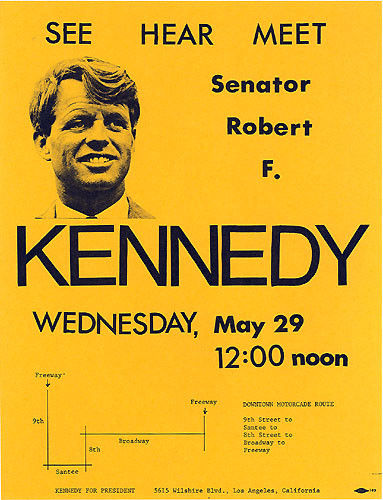
He continued his duties at the Department of Justice under Lyndon Johnson’s presidency until 1964, but the two never got along well and Bobby quit his job. Instead he ran for the post of US Senator for the State of New York, launching an effective campaign which won him the November election by 719,000 votes.
As New York’s Senator from January 1965, Bobby dedicated himself to three main causes:
First, he strived to supporting the dispossessed and the powerless in America, mainly the urban poor populations, the racial minorities and Native Americans. He sought to remedy the problems of poverty through legislation to encourage private industry to locate in poverty-stricken areas, thus creating jobs for the unemployed, and stressed the importance of work over welfare.
Then, he sought to advance human rights, both in the US and abroad. He was an outspoken critic of the apartheid system in South Africa, visiting the country in 1966 and delivering a memorable speech to an assembly of progressive students
“Each time a man stands up for an ideal, or acts to improve the lot of others, or strikes out against injustice, he sends forth a tiny ripple of hope, and crossing each other from a million different centres of energy and daring, those ripples build a current
And finally, he embarked on a personal quest to end the Vietnam War. Bobby had initially supported President Johnson’s military escalation in Indochina – until February 1966. This is when he first publicly denounced this policy and asked for the reduction of the war effort, as well as for the initiation of talks with the Viet Cong and the North Vietnamese government. He strongly opposed President Johnson’s authorisation of the carpet bombing of civilian targets in North Vietnam, which he denounced in another memorable speech in the Senate:
“Are we like the God of the Old Testament that we can decide, in Washington, DC, what cities, what towns, what hamlets in Vietnam are going to be destroyed?… Do we have to accept that?… I do not think we have to. I think we can do something about it.”
‘Everything is going to be OK’
On March 16, 1968, Robert Kennedy announced his candidacy for the Democratic presidential nomination. He would be running on a very progressive platform against the other main Democratic candidate, Hubert Humphrey.
It was, in the words of author Arthur Schlesinger Jr.,
“an uproarious campaign, filled with enthusiasm and fun… It was also a campaign moving in its sweep and passion.”
In his campaign Bobby built on the themes that had marked his senatorial term: advancement of human rights, including supporting the Civil Rights movement, helping the dispossessed in the urban areas and the Native American reservations and putting an end to the Vietnam War.
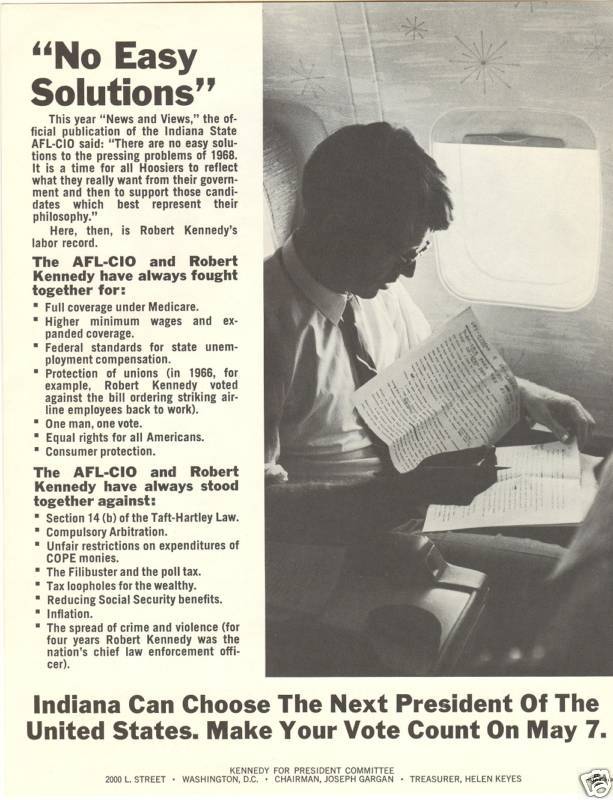
His candidates were supportive of a broader, safer, more conservative message, and yet Bobby managed to win critical primary elections in Nebraska and Indiana.
And it was just before speaking at an Indianapolis rally that Bobby learned of the murder of Martin Luther King. It was the 4th of April 1968, five years since the former Attorney General had approved of the Reverend’s surveillance by the FBI.
That evening Bobby delivered one his most famous speeches informing the crowd of King’s death and urging them to not react angrily. He concluded by making an appeal for racial unity in those difficult times. Following King’s death, riots broke out in more than 100 cities across the US, but Indianapolis remained peaceful.
After securing Nebraska and Indiana, Bobby was looking forward to winning the California primaries in early June. The Democratic candidacy was within his grasp.
And so, we are back to the start of our video.
It’s the night between the 4th and the 5th of June 1968, Ambassador Hotel, Los Angeles. Robert F. Kennedy has just announced his victory at the California primaries to an ecstatic crowd of supporters. After a brief speech Bobby mingled with the crowd and Hotel staff. According to witnesses, he was moving slowly through the Hotel restaurant’s pantry. When he reached out to shake the hand of a busboy, Juan Romero, a young man stepped out from the crowd, raised his arm and after shouting “Kennedy, you son of a bitch!” he began shooting.
That man was called Sirhan Sirhan, a 24-year old Palestinian refugee.
Kennedy was hit three times: in his armpit, in the back and behind his right ear. Members of his entourage apprehended Sirhan and slammed him down on a metal table, but he was able to continue shooting, wounding five other by-standers.
As Kennedy’s friends, which included a professional Football player, struggled to pin down the diminutive Sirhan, he yelled
“Let me explain! I can explain! I did it for my country. I love my country.”
Juan Romero knelt to help Bobby, who was on the floor, bleeding. Kennedy asked
“Is everybody OK?”
Romero replied that ‘Yes, everybody’s OK’. Bobby then turned away and said
“Everything’s going to be OK.”
Those were his last words. Robert Kennedy died 26 hours later, aged 42. His eleventh child, Rory, would be born six months later.
Act II
Sirhan
It’s time now to examine the life of the man on the other side of the gun. Who was Sirhan Sirhan and what had driven him to murder Robert Kennedy?
Sirhan Bishara Sirhan was a Jordanian citizen born on March 19, 1944, in Jerusalem, Mandatory Palestine, into a highly religious family of Arab–Christians. He spent the early few years of his life in his home country and also completed his early schooling there.
If you know even a little of Middle Eastern history, you may have guessed that being a Palestinian child in the late 1940s did not make for a quiet upbringing, and Sirhan’s childhood was no exception. Following the declaration of Israel as an independent state and the subsequent declaration of war by the surrounding Arab Countries, Sirhan and his family would witness violence on a daily basis.
In one traumatic experience, Sirhan saw a man being ripped to pieces during a bombing raid in his neighbourhood. His mother, Mary, said that the image haunted her son, and he would never be the same.
At the age of 12, the Sirhans had the chance to emigrate to the United States, as part of a special visa programme granted to Palestinian refugees. The young Sirhan did not escape completely from a life of violence, though, as his father had a volatile temper and would physically assault him on several occasions.
Life in America
Despite being an outsider within a dysfunctional family, Sirhan adapted quite well to American life. He first attended the Eliot Junior High School in New York, before the family relocated to California where he enrolled in the Pasadena City College. Sirhan was academically good and proved his worth in both school and college. However, despite having the chance to do so, he never applied for American citizenship and preferred to remain a Jordanian.
After graduating from Pasadena, Sirhan drifted from one job to another, never settling into a career and holding a series of menial jobs. The only career prospect he considered seriously was horse racing. At one point, he found himself working as a stable boy at the Santa Anita racetrack. Being only 5 feet 5 inches tall and weighing 115 pounds, he had the perfect physique to become a professional jockey, but his hopes did not materialise.
What did really define him at this stage in his life was his religious belief. He was an ardent Christian believer and he experimented with different church denominations, shifting from being a Coptic to joining the Baptist and the Adventist churches. In 1966, he finally joined the ‘Ancient Mystical Order of the Rose Cross,’ an American branch of Rosicrucianism.
This is a mystical branch of Christianity which dates back to the teachings of Johan Valentin Andreae, a XVIIth century Lutheran theologian. Rosicrucians combined early Christian philosophy with alchemy and even ancient Egyptian mysticism and have been associated with Freemasonry and Theosophism through the ages. We could talk about Rosicrucianism for hours on an end, but for the purpose of our story we will only mention that Sirhan’s association to this movement has been linked to his shift towards religious extremism, nationalism or even brainwashing.
Sirhan and Bobby
So what we have so far is a deeply religious yet alienated young man, with few prospects in life and a violent upbringing. Was this enough to push him towards murder? And why Bobby Kennedy? What was his relationship with him?
‘ … and I felt that I was one of those’
But this perception changed in June 1967 with the six-day war, another victory which the State of Israel had gained against its Arab neighbours. As a Senator, Robert Kennedy had openly supported Israel during that conflict.
After announcing his candidacy in March 1968 as new Democratic hopeful President, Kennedy made his support of Israel more frequent and outspoken. At a speech in a synagogue, broadcasted via radio, Kennedy pledged to support Israel with 50 fighter jets should he become President.
Sirhan’s feelings towards the candidate had grown increasingly hostile since the Six-day war. After hearing the speech, Sirhan had a violent reaction witnessed by his family, screaming and storming out of the room.
On the 18th of May, Sirhan wrote in his diary:
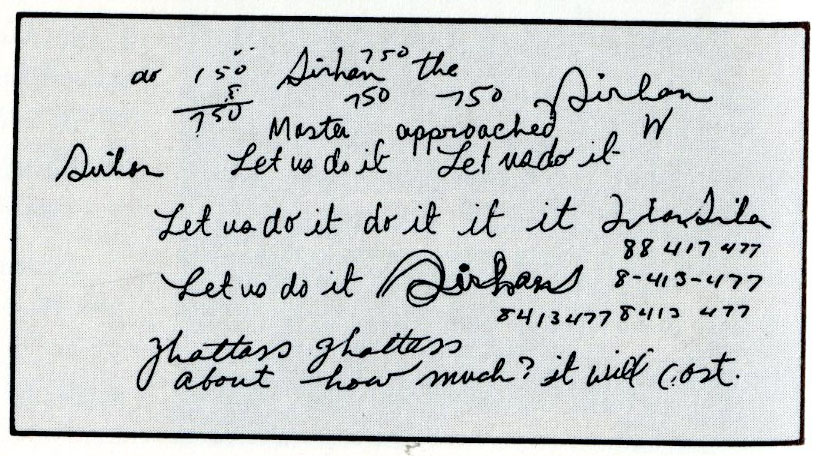
The 5th of June 1968, it would have been the first anniversary of the Six-days War.
On the 1st of June, witnesses reported seeing Sirhan at the Lock, Stock, ‘N Barrel gun shop in Los Angeles, where he bought two boxes of .22-caliber hollow point bullets.
On the 3rd of June, he was first spotted by staff at the Ambassador Hotel, apparently surveying the site where the presidential hopeful would be expected to wait for the results of the California primaries on the following day.
On the 4th of June, only hours before the shooting, Sirhan visited the San Gabriel Valley Gun Club to practice at its gun range.
And now to the night of the 4th, a few minutes before midnight. Robert Kennedy was delivering the last lines of his speech in the Embassy ballroom at the Ambassador hotel, while Sirhan was in the hotel’s kitchen pantry area, waiting – with a .22-caliber Iver-Johnson Cadet handgun in his pocket.
Ambassador employees Jesus Perez and Martin Petrusky, remembered Sirhan lingering around the elevator area as Kennedy was still on stage.
You know what happened next: the screams, the gun shots, Kennedy falling on the floor, while Sirhan was apprehended still yelling “I did it for my country!”
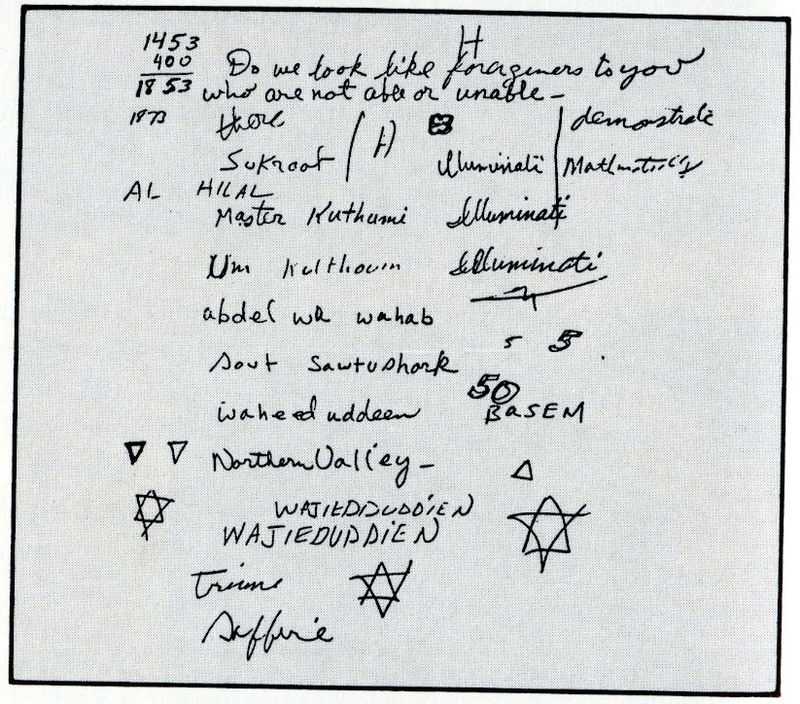
.
Sirhan initially refused to speak or identify himself to the police. It wasn’t until the 9th of June that decided to confess to the crime. But on insistence from his lawyers, he retracted his confession and pleaded not guilty.
The trial took place between January and April 1969 and during court hearings Sirhan behaved erratically. Sometimes he claimed that on the night of the murder he was drunk and that he had no recollection of killing Kennedy, while in other occasions he stated that if he had killed him, it wasn’t out of personal hatred but as an act in service to his Country, Palestine. These discrepancies may have been part of the defence strategy, based on the concept that Sirhan was suffering from a condition known as ‘diminished capacity’, a thesis supported by professor of psychiatry at UCLA, Bernard Diamond.
The jury was not convinced, though, and eventually Sirhan was found guilty of murder on the 17th of April 1969 and sentenced to death.
His story may have ended there, but in 1972 the State of California declared the death penalty to be unconstitutional and so his sentence was commuted to life imprisonment.
Sirhan Sirhan has been a convict in the Californian state prisons since then, first serving time in San Quentin, then Soledad, Pleasant Valley and finally the Richard Donovan Correctional Facility in San Diego.
Over the years Sirhan has not been a silent convict, far from it. His lawyers have been constantly filing requests for parole hearings: one of these is held every five years, the last one in 2016, and they have all been rejected. What is interesting about these hearings, though, is that they have given the chance to Sirhan, his lawyers and his supporters to present new evidence supporting the claim that he was not Kennedy’s assassin – or at least not a willing one – or maybe not the only one.
It’s time now to look at these theories. I hope you are not easily offended by the ‘C- word’: Conspiracy.
Act III
The Conspiracy
The official explanation for the murder of Robert F. Kennedy is that Sirhan Sirhan had acted alone, because he was mentally instable, because he wanted to strike at an enemy of the Arab cause, or both. This would make Bobby’s assassination the first American encounter with Middle Eastern terrorism.
Over the years many more theories have emerged, claiming that Sirhan had not acted alone or that he had been a pawn in the hands of more powerful and sinister forces.
Hypnosis
At the 2011 parole hearing, Sirhan’s attorney Larry Teeter brought forward the hypothesis that Sirhan may have been hypnotised, brainwashed and conditioned to carry out the assassination of RFK. He had been identified and selected as a ‘patsy’ or ‘fall guy’, because of his foreign origin and support of the Palestinian cause.
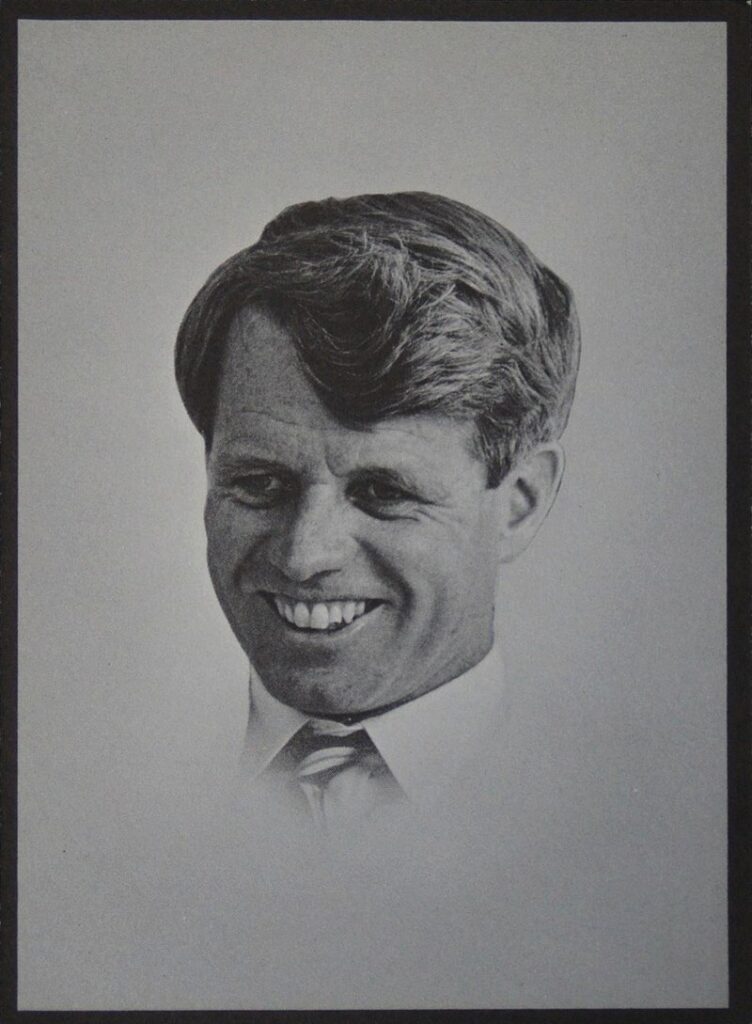
These theory is supported also by British author Peter Evans in his book Nemesis. According to Evans and Teeter, after interrogating Sirhan the Los Angeles Police Department could not account for a period of three months, known as the “white fog”, during which Sirhan’s movements were unknown. It was during this ‘white fog’ days that Sirhan may have been hypnotised by psychiatrist Dr William Joseph Bryan Jnr, who had worked on the infamous CIA mind-control programme called MKULTRA.
This programme was an expansion on two pre-existing operations run by the CIA in the 1950s, called Project Bluebird and Project Artichoke. Both projects envisage the possibility of using hypnosis as an interrogation technique or as a way of manipulating a foreign national – and I stress, a foreign national – to carry out political assassinations. Bluebird, Artichoke and MKULTRA, as outlandish as they may sound, have all been acknowledged by the CIA and documentation related to them is freely accessible via Freedom of Information requests.
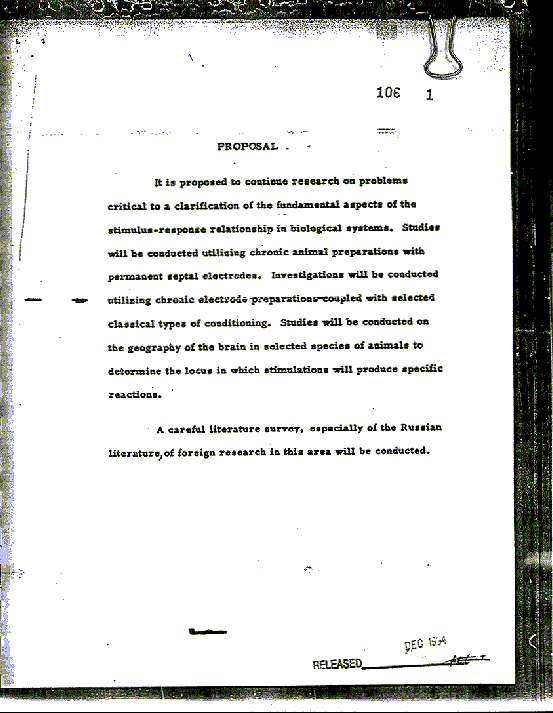
What is chilling is that the official documentation for Bluebird and Artichoke does not raise any moral considerations around using hypnosis in interrogations or brainwashing innocent people to turn them into assassins. The main concern is sourcing the right psychiatrist for the job, because a private practitioner would likely not accept a lowly CIA salary …
Didn’t know that the ‘C’ in CIA stood for ‘Cheap’ (!)
But back to the 2011 parole hearing! Why did the hypnosis theory emerge only then? Well, ironically enough, it was only then that Attorney Teeter had the idea to have Sirhan hypnotised to retrieve repressed memories of the assassination.
During those sessions Sirhan was able to remember a detail previously concealed. He remembered meeting a girl in a polka-dot dress on the night of the assassination
“I was fascinated with her looks …. She never said much. It was very erotic. I was consumed by her. She was a seductress with an unspoken unavailability.”
The girl took him to the kitchen pantry and then pinched him on the arm. This was a ‘trigger action’ which led him to believe that he was on a weapons firing range – that’s when Sirhan began shooting.
But who were the brains behind the whole operation?
According to Teeter,
“The assassination was staged by US intelligence for the purpose of continuing the war against Vietnam and putting the Republican Party in the White House. The assassination was arranged with the CIA, the FBI and the LAPD. There was a massive cover-up. If he had lived and been allowed to run, Bobby Kennedy would have been elected president and this was a multi-agency task force to make sure that the Democrats didn’t take the White House again.”
On the other hand, Peter Evans states a completely different theory in Nemesis. Sirhan had been hypnotised to be at the Ambassador and take the blame off the actual assassin, a Palestinian terrorist named Mahmoud Hamshari.
And Hamshari was himself a pawn, on the payroll of none other than Greek magnate Aristotle Onassis, Jackie Kennedy’s suitor at that time. The motive? Personal resentment towards Bobby, who had foiled a major deal between Onassis and the Saudis in 1953 and was opposed to the Greek billionaire marrying his sister-in-law.
According to Evans, the CIA psychiatrist Dr Bryan had links to both Hamshari and Onassis, having cured the former for migraine, and the latter for sexual dysfunction. And finally one of Onassis’ lovers, Helen Gaillet De Neergaard, reported that he himself had admitted his complicity in the killing in1974.
Oh, by the way, Dr Bryan? He was found dead in a Las Vegas hotel room in 1978, either shot himself or was murdered. The case remains unsolved.
The brainwashing theory is certainly fascinating, and we know by the CIA’s own admission that the use of hypnosis to interrogate, or kill, was in their plans.
But something does not add up, and please note these are our personal considerations:
if Sirhan had been programmed to believe he was at a firing range, shooting at targets
if such belief was triggered by the pinch from the girl in the polka-dot dress
why did he shout, “Kennedy you son of a bitch?”. Why did he shout, “I did it for my country?”
If he was a ‘patsy’ all along, acting mechanically at the tap of some girl in polka-dots, how could he behave in such a competent way prior to the assassination? He knew where Kennedy was due to speak, he visited the location, he practised at a firing range and he acquired a .22 caliber gun – a low powered pistol, perfect choice for shooting in a closed environment such a pantry.
Now, this choice of a weapon makes even more sense if other assassins are there. Other hitmen, even more competent, who want to avoid the risk of being hit by ‘friendly fire’. Time for our second Conspiracy theory.
Multiple Shooters
While researching the case for a screenplay, author and reporter Shane O’Sullivan uncovered new video and photographic evidence suggesting that three senior CIA operatives were behind the killing. This time, not as shady hypnotists, but as hitmen involved directly in the assassination.
The first agent is David Sanchez Morales, known for leading covert operations in Latin America. As far back as 1973, Morales had been reported as saying
“I was in Dallas when we got the son of a bitch and I was in Los Angeles when we got the little bastard.”
Referring to both Kennedy brothers, of course.
Analysing footage and stills from the night of the assassination, ‘O Sullivan was able to identify Morales standing at the back of the ballroom, in the moments between the end of Kennedy’s speech and the shooting. Morales was also spotted alongside another operative called Gordon Campbell. Morales and Campbell had worked together at the CIA’s Miami base in 1963. Both had been involved in the planning of the Bay of the Pigs invasion and were harsh critics of the Kennedys, blaming them for the failure of that operation.
A third senior CIA figure was identified by looking at the crime scene photos taken by the LAPD: George Joannides, chief of psychological warfare operations at the Miami base.
Whatever the involvement of Morales, Campbell and Joannides, it is a shared belief that Sirhan was not the only shooter at the Ambassador hotel.
In the last parole hearing in 2016, Paul Schrade, one of the five other people injured in the shooting, said the evidence clearly showed a second gunman had been in the kitchen pantry.
First piece of evidence, the number of shots. Sirhan’s gun could only carry eight rounds, and yet a radio reporter recorded the sound of 13 shots being fired in the pantry. This was confirmed by campaign volunteer Nina Rhodes-Hughes who reported to the FBI that she heard anywhere from 12-14 shots that night. Bobby’s own son, Robert Kennedy Jr is convinced of this thesis, as he declared to The Washington Post:
“There were too many bullets. You can’t fire 13 shots out of an eight-shot gun.”
Second point: direction of shooting. How could Sirhan have shot Kennedy in the back and behind the ear if all eye witnesses confirm that he was standing in front of him?
Third: distance. Los Angeles County Coroner Thomas Noguchi found that Bobby’s fatal head wound, with an entry trajectory form behind the ear, had been inflicted from a distance of 1 inch to 1 1/2 inches. And Sirhan, he had been standing at at least 18 inches’ distance.
So, another hitman, closer to Bobby than Sirhan was, had shot him behind the ear at close distance. Morales? Campbell? Joannides? Or somebody else? According to some witnesses, a security guard called Thane Cesar, standing behind Kennedy at the time was seen drawing his weapon. Although we should specify, he was not seen shooting and he later passed a polygraph test that included questions about whether he shot Kennedy.
Can we handle the truth?
We have presented only three possible explanations of who, why and how could have been behind the assassination of Robert Kennedy, Bobby, a man who could have shone a beacon of hope in a traumatic period of American history. He could have ended the Vietnam War much earlier, supported the cause of the desperately poor and accelerated the process of integration brought about by the Civil Rights movement. These progressive goals would be at least partially achieved by subsequent administrations. But sadly at that time they could have provided enough motive for US intelligence agencies – or at least for factions within them – to be involved in Bobby’s killing.
And what was Sirhan’s real role in this event? Was he really the victim of brainwashing, or perhaps the willing participant of a larger conspiracy, the only one to take the blame? We will stand by to hear from Sirhan’s next parole hearing in 2021, hoping that the truth will finally emerge. Whether we will be able to handle it, that’s another question.

So I hoped you liked this new, extended format, please leave your comments as usual. Did you like it? Hate it? But most of all, don’t forget to tell us what is your theory for Robert Kennedy’s assassination. And as usual, thank you for watching.





